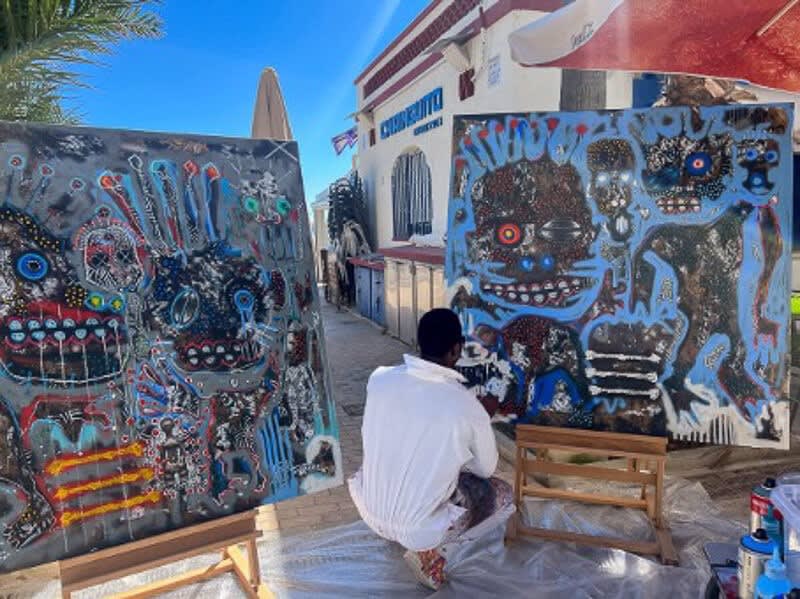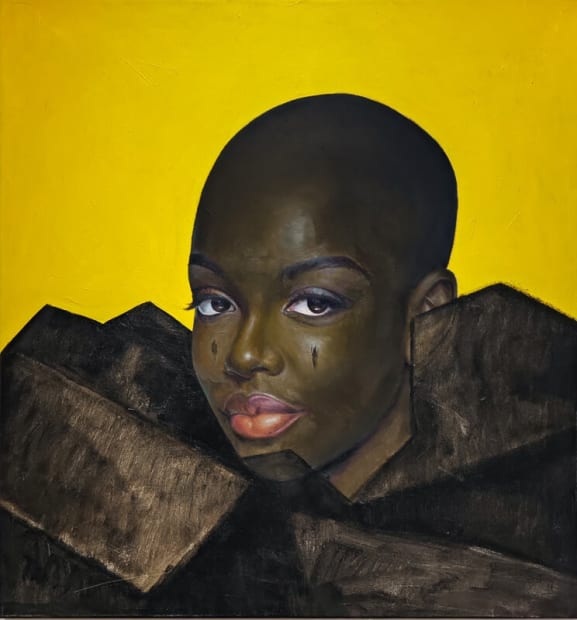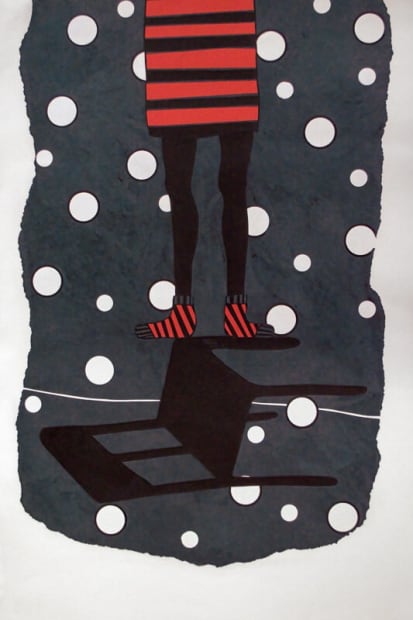A Curated Journey Through African Creativity
From Lagos to Cape Town, from the streets of Abidjan to the studios of the diaspora, contemporary African art is reshaping global creativity. At OOA Gallery, we offer a curated gateway into this vibrant, bold, and deeply human artistic movement.
-

Aboudia - Les trois amis III, 2018
-
 Prince Galla Gnohité, Complicité (2021)
Prince Galla Gnohité, Complicité (2021) -
Why Collect Contemporary African Art Today?
1. Unquestionable Artistic Value: African contemporary artists create with freedom, technical mastery, and narrative power comparable to the most established art scenes.
2. Strong Sociopolitical Engagement: Their works address major contemporary issues—history, gender, memory, ecology, migration—imbuing them with universal significance.
3. Investment Potential: African artists are gaining increasing recognition, with rising valuations, international exhibitions, and growing museum acquisitions.
4. An Engaged Collection: Collecting contemporary African art supports vibrant, critical creation and contributes to a more global representation of African voices.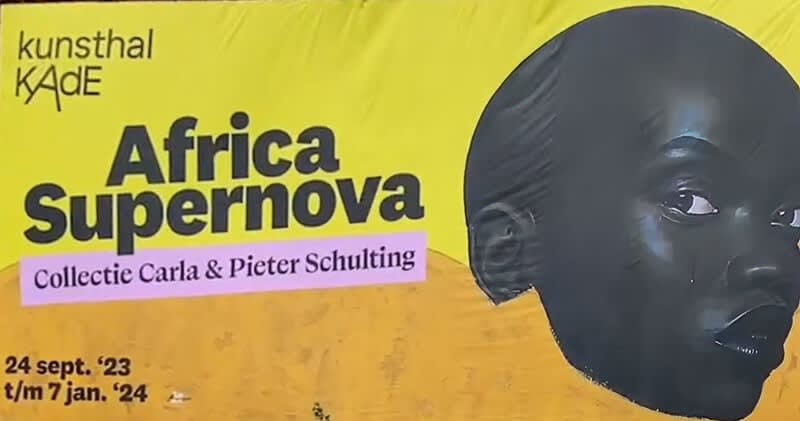 Oluwole Omofemi, Fearless (2021)
Oluwole Omofemi, Fearless (2021)Featured on the poster of the Africa Supernova exhibition (Schulting Art Collection), this striking portrait by Nigerian artist Oluwole Omofemi embodies the strength, dignity, and resilience of contemporary African womanhood. Omofemi’s work exemplifies the fusion of technical mastery and profound narrative, making it a compelling representation of the dynamic force of African art in today's global market.
-
 Megan Gabrielle Harris, Astral (2025)
Megan Gabrielle Harris, Astral (2025) -

Tiffany Alfonseca, Fe, Paz y Paciencia (2024)
-
 BOB-NOSA, Shut Up II (2019)
BOB-NOSA, Shut Up II (2019) -
Tradition and Modernity: The Thread of Continuity
Many African artists embrace their roots while confronting present realities. They reinterpret ancient knowledge, spiritual symbols, and artisanal techniques, integrating them into works that are both contemporary and deeply cultural.
Marion Boehm, Boukaré Bonkoungou, and Méné build bridges between past and future by reimagining textiles, architectural forms, and narratives of transmission.
Mederic Turay embodies a powerful synthesis of tradition and modernity. His works blend ancestral African influences, graffiti, abstraction, and universal symbolism. He explores tensions between collective memory and identity transformation, revisiting African mythologies through a contemporary and spiritual aesthetic.Médéric Turay performing live painting on the Paseo Marítimo of Sitges,
working on Can I Tell You a Secret (2024)In this behind-the-scenes moment, Mederic Turay embodies his dual approach — merging ancestral symbology with a raw, contemporary visual language. His process reflects a deep engagement with African spiritual heritage and its transformation through modern artistic expression. The painting is characterized by its vivid colors and layered imagery, featuring abstract forms and symbolic elements that evoke a sense of ancestral memory and contemporary experience. Turay's technique reflects a fusion of traditional African aesthetics with modern urban influences, creating a dialogue between past and present. The title itself, Can I Tell You a Secret, suggests an intimate exchange, prompting viewers to engage with the artwork on a personal level. The composition's complexity mirrors the layered nature of secrets and the human psyche, encouraging contemplation and introspection. Turay's work is known for its exploration of themes such as spirituality, transformation, and the interconnectedness of life. In this piece, the interplay of materials and forms serves as a metaphor for the multifaceted nature of human identity and the secrets we carry within.
-
 Daniel Onguene, Le Chasseur du Soir (2022)
Daniel Onguene, Le Chasseur du Soir (2022) -
In Le Chasseur du Soir (“The Evening Hunter”), Cameroonian artist Daniel Onguene offers a striking meditation on the daily hustle of urban survival. The painting features a solitary figure—likely a street vendor—standing in a desolate, twilight-toned urban setting, holding a pair of sneakers as if they were trophies or tools of trade. The backdrop, marked by graffiti and industrial debris, echoes themes of marginalization and economic struggle.
The vendor is not just selling — he is hunting for opportunity, navigating the complex ecosystems of African city life where resilience and adaptability are vital for survival. Onguene’s choice of vivid, saturated colors contrasts with the gritty environment, suggesting a tension between aspiration and reality, light and decay, creativity and necessity.
The work is rich in metaphor: the act of selling becomes a ritual of self-assertion, the sneakers a symbol of mobility, status, or transformation. There is dignity in the subject’s stance, rendered with the quiet strength that characterizes many of Onguene’s protagonists. The artist transforms what might be a fleeting urban scene into a layered commentary on agency, labor, and hope in the shadows of economic precarity.
Ultimately, Le Chasseur du Soir is a powerful visual statement about the informal economy as a space of both vulnerability and creativity—a theme central to contemporary African art and society.
-
 "Rebirth 2” (2024) by Oluwole Omofemi
"Rebirth 2” (2024) by Oluwole Omofemi -
“Rebirth 2” is a landmark artwork by Nigerian artist Oluwole Omofemi, whose practice delves into the intersections of cultural heritage, Black identity, and futuristic vision. The painting depicts a Black woman with a clean-shaven head and subtle traditional facial markings. Her posture is upright, her gaze direct—radiating a calm intensity and quiet strength. Behind her stretches a vibrant golden yellow background, evoking sunlight, spirituality, and clarity. In this portrait, Oluwole Omofemi transcends naturalistic depiction to deliver a symbolic meditation on rebirth and self-possession. The title itself—Rebirth—suggests not only a personal renewal but a broader cultural and spiritual reawakening. The shaved head, often a marker of transition or transformation, becomes here a sign of empowerment and identity reclamation. The facial markings subtly allude to ancestral memory and ritual, anchoring the subject in a lineage while projecting her toward an unapologetically self-defined future. Visually, the work is striking for its minimalist composition and rich emotional resonance. The stark contrast between the dark skin and the luminous yellow field heightens the subject’s presence, creating an almost iconic effect. The viewer is invited not just to see, but to contemplate—who she is, what she represents, and the future she embodies.“Rebirth 2” is ultimately a visual manifesto of Afrofuturism. It reclaims the Black female form as a space of imagination, autonomy, and cultural pride. In Omofemi’s hands, the portrait becomes both a personal affirmation and a collective vision—one that honors the past, engages the present, and dreams forward. -
African Art Reimagined Through Recycled and Upcycled Materials
In response to environmental challenges, several African artists are redefining what constitutes artistic materials through recycled art, upcycled compositions, and eco-art practices. Artists like Patrick Tagoe-Turkson and Doff (Appolinaire Guidimbaye) embrace a sustainable art approach by transforming reclaimed objects, worn textiles, and industrial waste into poetic and critical artworks. Their creative processes honor the memory of materials, challenge consumption habits, and explore the delicate balance between artistic expression and environmental responsibility. Patrick Tagoe-Turkson – “Abunanun 2” (2022)
Patrick Tagoe-Turkson – “Abunanun 2” (2022)In Abunanun 2, Ghanaian artist Patrick Tagoe-Turkson transforms environmental waste into cultural expression. Created entirely from discarded flip-flops collected along the beaches of Ghana’s Western Region, the work is part of a broader practice that fuses ecological awareness with traditional aesthetics. The result is a large-scale horizontal tapestry, meticulously arranged into geometric compositions that echo the patterns of Kente cloth, a symbol of Ghanaian heritage.
Patrick Tagoe-Turkson’s process involves cutting, assembling, and stitching the rubber fragments, turning what once floated lifeless in polluted waters into a vivid narrative surface. Each fragment carries traces of prior journeys—worn textures, faded colors, and fractures—which collectively speak to human presence, movement, and consumption.The title “Abunanun”, derived from the Fante language, refers to a spirit or ancestral energy, subtly invoking the memory held in these objects and the cultural significance of reuse. The horizontal orientation of the piece suggests continuity and flow, reinforcing the artist’s commitment to both environmental cycles and artistic rhythm.Abunanun 2 is more than a reclamation of material—it is a reclamation of meaning. It invites viewers to reflect on the beauty of repurposing, the dignity of labor, and the creative resistance embedded in sustainability. It is an act of reparation as much as of art-making, reclaiming discarded fragments to restore both ecological and cultural balance.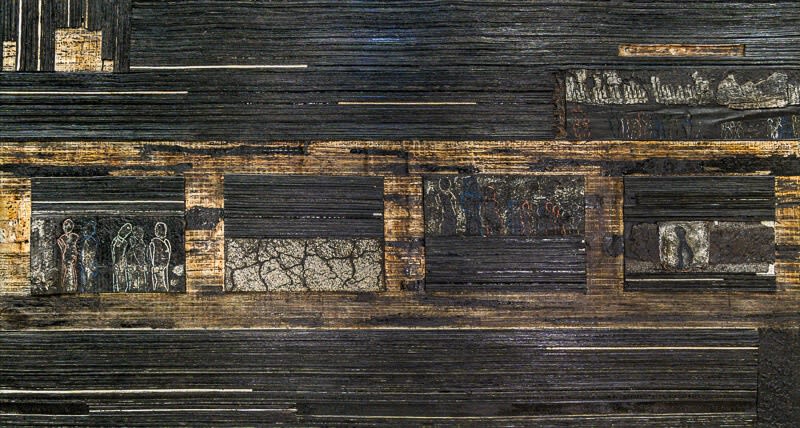 Doff (Appolinaire Guidimbaye) – “Black Beyond Darkness I” (2023)In Black Beyond Darkness I, Chadian artist Doff (Appolinaire Guidimbaye) constructs a visceral and meditative composition from the discarded detritus of the modern world. Using paxalu (a waterproofing material often used in industrial construction), recycled plastics, and fragments of wood, Doff builds a textured, shadowy surface that both absorbs and emits meaning. The work reads like a stratified landscape of decay, yet it resists despair—offering, instead, a solemn and poetic statement on survival.The deep blacks and earth-tones dominate the visual field, evoking themes of burial, concealment, and forgotten histories. But rather than being a void, darkness here is fertile—a symbolic terrain where new narratives are incubated from what society casts away. Through his assemblage technique, Doff reclaims the dignity of neglected materials, presenting them as witnesses of consumption, globalization, and environmental neglect.The title Black Beyond Darkness serves as both a metaphor and a provocation. It alludes to blackness as a physical, cultural, and political state—not just an absence of light, but a realm of depth, resistance, and complexity. The layered materials become archives of memory, each scratch or stain hinting at previous utility and abandonment. This piece is emblematic of Doff’s practice: a confrontation with ecological crisis that refuses spectacle, choosing instead intimacy and tactility. It speaks not through grand gestures, but through material truth, making us confront what we overlook daily—what we consume, discard, and deny.
Doff (Appolinaire Guidimbaye) – “Black Beyond Darkness I” (2023)In Black Beyond Darkness I, Chadian artist Doff (Appolinaire Guidimbaye) constructs a visceral and meditative composition from the discarded detritus of the modern world. Using paxalu (a waterproofing material often used in industrial construction), recycled plastics, and fragments of wood, Doff builds a textured, shadowy surface that both absorbs and emits meaning. The work reads like a stratified landscape of decay, yet it resists despair—offering, instead, a solemn and poetic statement on survival.The deep blacks and earth-tones dominate the visual field, evoking themes of burial, concealment, and forgotten histories. But rather than being a void, darkness here is fertile—a symbolic terrain where new narratives are incubated from what society casts away. Through his assemblage technique, Doff reclaims the dignity of neglected materials, presenting them as witnesses of consumption, globalization, and environmental neglect.The title Black Beyond Darkness serves as both a metaphor and a provocation. It alludes to blackness as a physical, cultural, and political state—not just an absence of light, but a realm of depth, resistance, and complexity. The layered materials become archives of memory, each scratch or stain hinting at previous utility and abandonment. This piece is emblematic of Doff’s practice: a confrontation with ecological crisis that refuses spectacle, choosing instead intimacy and tactility. It speaks not through grand gestures, but through material truth, making us confront what we overlook daily—what we consume, discard, and deny. -
 Andrés Montalván Cuéllar – Sin título (2024)
Andrés Montalván Cuéllar – Sin título (2024) -
"Sin título (2024)": This powerful sculpture by Andrés Montalván presents two opposing human heads—one white, one rust-toned—emerging from a monumental half-circle form. Stark in contrast yet bound within the same material base, the figures appear locked in a silent exchange, evoking questions of identity, duality, ancestry, and perception.Crafted in rusted steel and cast heads, the work invites reflection on human connectivity across distance and difference. The semi-circular base, raw and elemental, recalls the earth, a vessel, or even a horizon line—bridging the physical and symbolic. Andrés Montalván’s poetic minimalism offers a sculptural language that speaks to both ritual and rupture. This piece exemplifies his ongoing interest in the dialogue between material and spirit, form and meaning. The textured surface and minimal color palette draw attention to presence, absence, and the thresholds of understanding. -
 Rémy Samuz — Petit Penseur (2024)
Rémy Samuz — Petit Penseur (2024) -

-
 Moses Zibor – Reincarnation (2021)
Moses Zibor – Reincarnation (2021) -
Cut, Layer, Reveal: Collage in Contemporary African Art
Collage, by its very nature, is a medium of assembly and disruption — of creating through cutting, layering, and recomposing. In African contemporary art, it has become a powerful tool for exploring themes of identity, history, memory, and fragmentation. At OOA Gallery, two distinctive voices bring the language of collage into sharp focus.
David Thuku, from Kenya, uses precise paper cuts and minimalist layers to explore urban environments, social structures, and identity. By cutting through surfaces, he reveals what lies beneath — questioning the roles we play in public and the truths we hide in private.
Francklin Mbungu, from the DRC, brings a vibrant, expressive energy to his collage practice. Drawing on Kinshasa's street culture, popular iconography, and comic-strip aesthetics, his pieces combine humor, resistance, and movement. His cut-outs are dynamic portraits of contemporary African life — simultaneously political and poetic.Through collage, these artists manipulate both material and meaning, crafting works that speak to the complexity of modern African experience in all its layers. -
 David Thuku – Untitled IV (2019)
David Thuku – Untitled IV (2019) -

-
 Marion Boehm – Daliah & Said (2022)
Marion Boehm – Daliah & Said (2022) -
In Daliah & Said, Marion Boehm creates a powerful and tender portrait of a mother and child, rendered through her signature technique of mixed media collage. The figures are brought to life through the meticulous application of textiles, embroidery, and decorative materials, creating a tactile surface that vibrates with cultural memory and aesthetic richness. Marion Boehm’s use of printed text within the skin of the figures adds a further layer of meaning, suggesting untold stories, collective memory, and the written word as both mark and voice. Daliah & Said is more than a portrait: it is a celebration of maternal presence, cultural pride, and intergenerational strength. Marion Boehm honors not only the subjects she depicts, but the broader histories they carry.
-
Leading Voices on the International Scene
Several artists from our selection are gaining significant attention in the international market and among active collector circles:
- Oluwole Omofemi – A leading figure in Afrofuturism, with strong market valuations and iconic works.
- Aboudia – A prominent artist in the contemporary African scene, collected worldwide.
- Megan Gabrielle Harris – Celebrated for her introspective, emotionally resonant portraits, she has become one of the most collected artists in our program, standing out through her subtle, intuitive storytelling and contemporary take on diasporic femininity.
- Armand Boua – Sought after for his social and poetic works on urban conditions.
- REWA – Highly regarded for her reinvention of Black beauty in a refined aesthetic.
- Ajarb Bernard Ategwa – A rising star at art fairs, known for his pop and urban visual language.
- Matthew Eguavoen – Rapidly ascending, appreciated for his powerful identity-focused works.
- ANJEL (Boris Anje) – Highly visible among young international collectors, blending urban culture and African luxury.
- BOB-NOSA – An activist figure, whose impactful works are sought after for their political strength.Our Personalized Support — OOA Art Advisory
At OOA Gallery, we offer more than access to our represented artists — we offer a discerning and personalized gateway into the wider world of contemporary African art. Our Art Advisory Service is designed for collectors, businesses, and institutions seeking artworks that align with their vision, space, and values. Whether you're building a new collection, seeking a single impactful piece, or curating an exhibition, we provide confidential and expert guidance. We collaborate closely with a wide network of artists and galleries across the African continent and diaspora. This allows us to source exceptional works — whether by artists we represent or by others whose practice resonates with your aesthetic, thematic, or curatorial goals.
Through this flexible and research-driven approach, we offer:
- Strategic acquisitions tailored to your profile
- Access to exclusive and off-market works
- Market insights grounded in expertise and ethics
- A focus on quality, authenticity, and long-term value
OOA Art Advisory transforms art acquisition into a meaningful, informed, and deeply personal experience — rooted in knowledge, collaboration, and respect for the richness of African creativity.
Curate with purpose.
Collect with insight.
OOA Gallery — specialists in contemporary African excellence. -
Further Reading on Contemporary African Art
- “Stylish Blacks” by Paul Laster – Whitehot Magazine
- 10 artistas africanos que deberías conocer – Elemmental
- Oluwole Omofemi – La Vanguardia
- Zeitz MOCAA – Museum of Contemporary African Art
- Art Basel – Emerging Power of African Art
- El Anatsui at Tate Modern
- El Anatsui at Guggenheim Bilbao
- Mederic Turay – Bonart
- Dakar Biennale – Wikipedia
- Gallery Spotlight – Out of Africa Gallery – Artsy
- 10 Artists to Watch – Art X Lagos – Art Africa
- A Century of Black Figuration – Ocula
- National Museum of African Art – Smithsonian
- Africa Supernova – The Schulting Collection





